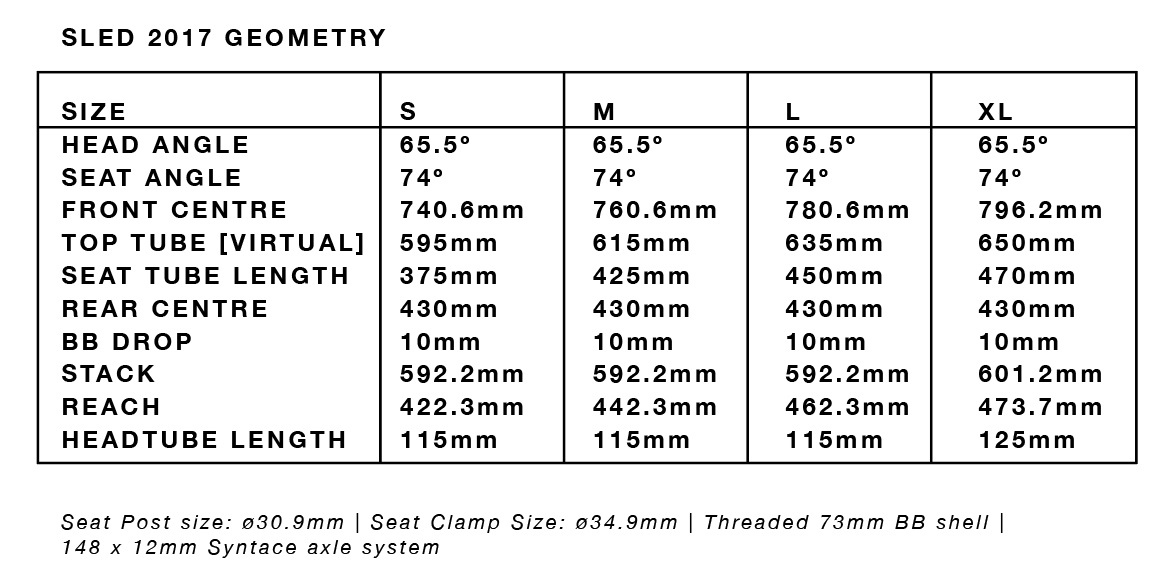Codename: Dave
DMR have unveiled their new full suspension bike – the 160mm travel DMR Sled enduro bike.
Need to know
- 160mm 27.5″ all mountain design
- 65.5° head angle, 74° seat angle
- Virtual pivot design with unique pivot around the bottom bracket
- £1,599 for frame only. InfraRed build from approx £3,500.

Metallic Black build
The Sled is not the first full suspension bike that DMR have made. A few years ago they made the steel framed short travel DMR Bolt which was a quirky playbike and jumpbike that had a few cult fans.
The new Sled is a much more regular sort of affair. It’s a 160mm travel enduro bike – DMR class it as being part of their ‘Alpine Division’ – with modern geometry.

Main pivot around the BB
The suspension design was drawn up with David Earle from Sotto design and Olly Wilkins was instrumental in the Sled’s nigh-on two year development period.
Little know fact: the Sled project was referred to only as “Dave” throughout the bike’s R&D period. “Did you ride with Dave this weekend? How was he?” was a common question in DMR land!
Geometry chart

So it’s not wildly progressive or pushing the envelope too far but does look like it’ll be a capable and fun ride.
Suspension design
The suspension design is something we’ve not seen the like of before.
From an initial driveside glance the bike looks pretty much like a standard virtual/floating pivot design – a la Santa Cruz or Intense – but a closer inspection reveals a main pivot that is concentric top the bottom bracket.

The suspension layout in full
The around-the-BB pivot is actually something that the DMR Bolt design had. On the bolt it was principally there to enable dirtjump riders to run the bike singlespeed (due to the fixed chain length).
When it came to the Sled, DMR realised that the virtual pivot design could be made to work with a BB-concentric main pivot.
Now then, the Sled cannot be run singlespeed because there is a bit of chain length variation throughout the suspension stroke, but the designers still claim there are numerous benefits to their suspension arrangement.
Namely an initially-backwards axle path (good for bump absorption) and impressive anti-squat characteristics.
Squat is when the suspension compression when pedal force is applied. So anti-squat is the forces that counteract this pedal induced suspension compression. This essentially means that the bike should pedal firmly when the suspension is at sag point but is still free to move as and when a bump comes along.
DMR also claim minimal pedal feedback and a good level of suspension being unaffected by rear braking.

Collet upper link pivot
Aside from the suspension design perhaps the key aspect of the Sled is intended to be its stiffness.
It is oversized in all the right places. It’s Boost axled. The upper link is very chunky. The upper link pivot is oversize colleted for stiffness.

Neat routing
What else?
Tidy internal cable routing, two colourways (InfraRed and Black), various decal kit options, non-Metric large-volume rear shock, 73mm threaded BB and it’s available this week.




